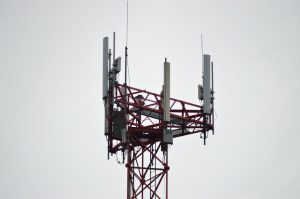The Future of Satellites: Revolutionizing Global Connectivity
The future of satellites is poised to revolutionize global connectivity, enabling faster and more reliable communication networks. With advancements in space technology, satellites are becoming increasingly important for bridging the digital divide and providing internet access to remote and underserved communities.

The Future of Satellites: Revolutionizing Global Connectivity
The future of satellites is poised to revolutionize global connectivity, enabling faster and more reliable communication networks. With advancements in space technology, satellites are becoming increasingly important for bridging the digital divide and providing internet access to remote and underserved communities. The focus keyword Future of Satellites is a critical aspect of this revolution, as it encompasses the latest developments and innovations in satellite technology.
One of the key drivers of the future of satellites is the growing demand for global connectivity. As the world becomes increasingly interconnected, the need for fast and reliable communication networks is becoming more pressing. Satellites are well-positioned to meet this demand, as they can provide coverage to remote and hard-to-reach areas where traditional communication infrastructure is lacking. For example, satellite constellations such as SpaceX’s Starlink and Amazon’s Kuiper Systems are being developed to provide global internet coverage, with the goal of bridging the digital divide and providing internet access to billions of people around the world.
The Role of Satellites in Bridging the Digital Divide
Satellites have long been recognized as a critical component of bridging the digital divide. By providing internet access to remote and underserved communities, satellites can help to level the playing field and promote economic development. However, traditional satellite technology has been limited by its high cost and limited bandwidth. The future of satellites is poised to change this, with advancements in space technology enabling the development of more efficient and cost-effective satellite systems. For instance, the use of Low-Earth Orbit (LEO) satellites is becoming increasingly popular, as they can provide faster and more reliable communication services at a lower cost than traditional Geostationary Orbit (GEO) satellites.
In addition to providing internet access, satellites are also being used for a range of other applications, including navigation, weather forecasting, and remote sensing. The use of satellites for these applications is becoming increasingly important, as they can provide critical data and services that are essential for modern society. For example, satellite navigation systems such as GPS and Galileo are being used for a range of applications, including transportation, agriculture, and emergency services. Similarly, satellite weather forecasting systems are being used to provide critical weather data and warnings, which can help to save lives and reduce the impact of severe weather events.
The Impact of Satellite Technology on Global Connectivity
The impact of satellite technology on global connectivity is likely to be significant. With the development of more efficient and cost-effective satellite systems, the cost of providing internet access and other communication services is likely to decrease. This could have a major impact on the digital divide, as it could enable more people to access the internet and other communication services. Additionally, the use of satellites for navigation, weather forecasting, and remote sensing could have a major impact on a range of industries, including transportation, agriculture, and emergency services.
However, the future of satellites is not without its challenges. One of the major challenges facing the satellite industry is the issue of space debris. As the number of satellites in orbit increases, the risk of collisions and other accidents also increases. This could have a major impact on the long-term sustainability of the satellite industry, and efforts are being made to develop more sustainable and responsible practices. For example, the use of de-orbiting technologies is becoming increasingly popular, as they can help to remove defunct satellites from orbit and reduce the risk of collisions.
Conclusion
In conclusion, the future of satellites is poised to revolutionize global connectivity, enabling faster and more reliable communication networks. With advancements in space technology, satellites are becoming increasingly important for bridging the digital divide and providing internet access to remote and underserved communities. As the demand for global connectivity continues to grow, the role of satellites is likely to become even more critical. However, the future of satellites is not without its challenges, and efforts are being made to develop more sustainable and responsible practices. The focus keyword Future of Satellites is a critical aspect of this revolution, as it encompasses the latest developments and innovations in satellite technology.



